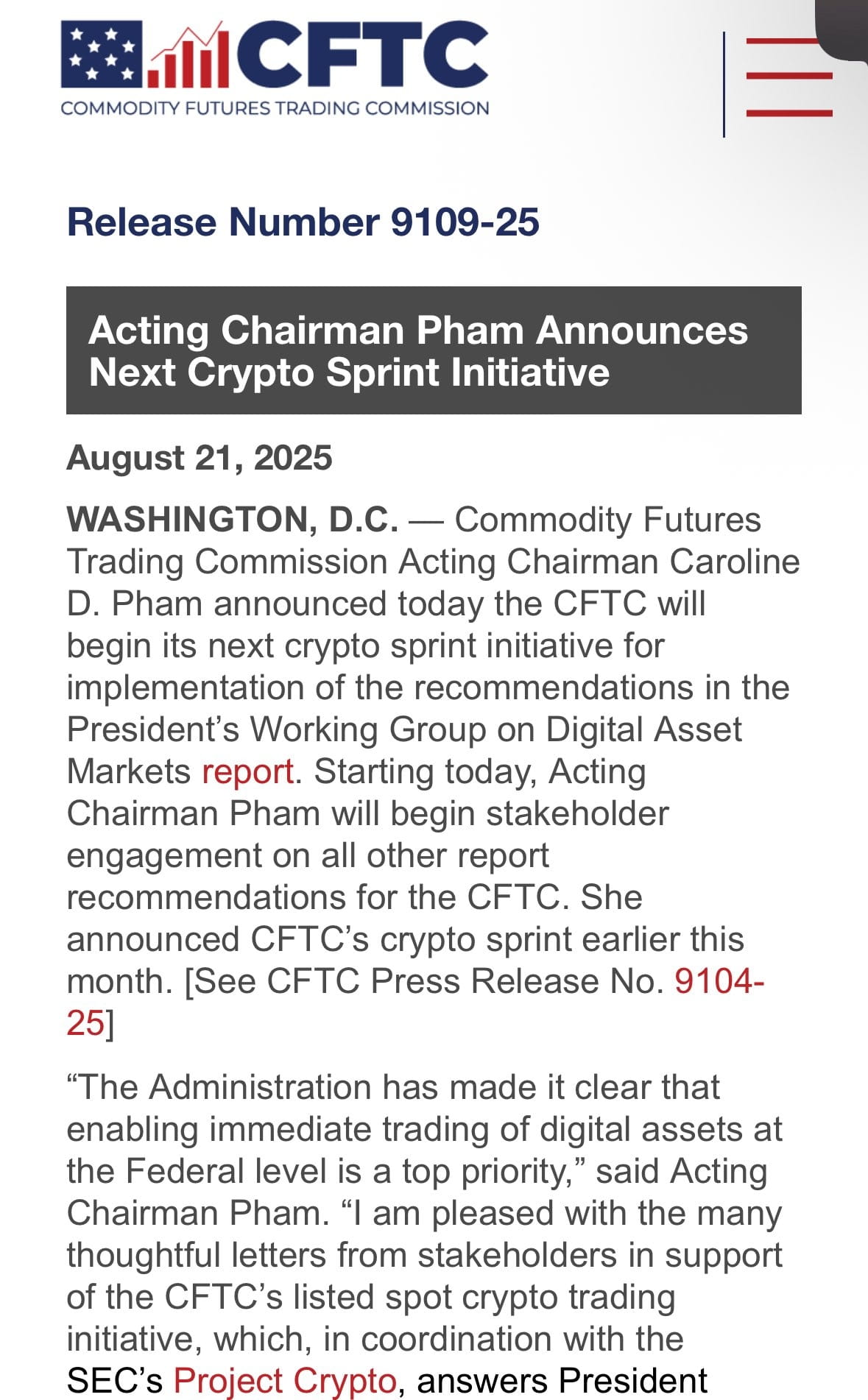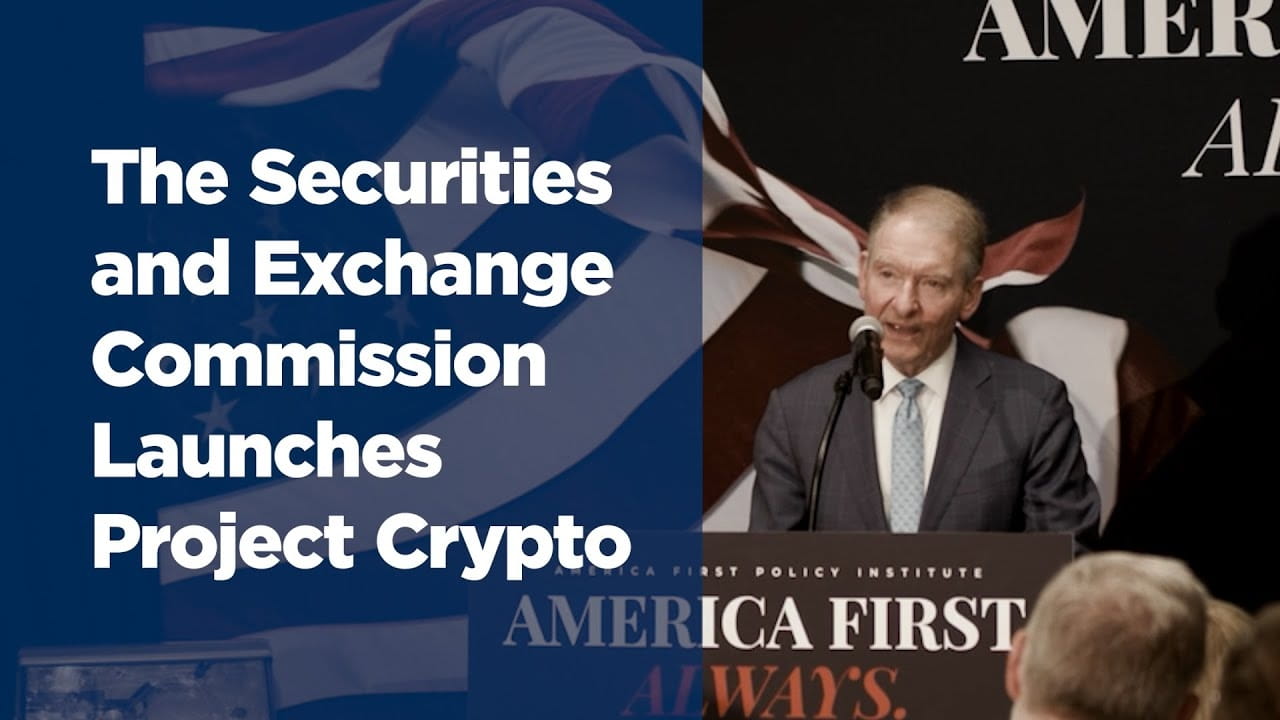Written by: Luke, Mars Finance
Prologue: Clearing the Policy Legacies of the Old Era
On August 22, 2025, more than seven months have passed since the new government took office. Since January of this year, Washington's friendly stance towards the crypto industry has become a clear policy axis. However, despite the established direction, the industry's development path is still scattered with obstacles left by the previous government. The 'enforcement-style regulation' strategy implemented by former SEC Chairman Gary Gensler before his departure in January 2025 is like the reefs left after the tide recedes; its impact has weakened, but many unresolved lawsuits and vague rule definitions still bind the industry's potential.
Under Gary Gensler, the SEC's core logic was to treat the vast majority of digital assets as securities and to delineate boundaries through litigation rather than legislation. The legacy issues of this strategy are evident: industry leaders like Coinbase are still facing legal challenges, and the controversial (Staff Accounting Bulletin No. 121) (SAB 121) restricts banks from providing large-scale crypto custody services, while developers and project parties still lack a clear, predictable 'safe harbor' for defining 'what constitutes a security'.
Therefore, for the crypto industry in 2025, the challenge is no longer facing a hostile regulatory agency but how to cooperate with a friendly government to efficiently 'dismantle the scaffolding of the old era' and quickly establish a clear and solid legal framework that can support development over the next decade. The entire industry is waiting for a landmark event, a signal to accelerate from 'establishing a friendly stance' to 'fully laying out rules'.
Acceleration Moment: Washington's Collaborative Action
This signal was clearly conveyed on August 22. This is not a sudden shift in policy, but a long-awaited collaborative action aimed at formalizing and systematizing friendly policies. The two major financial regulatory agencies in the U.S. — the Commodity Futures Trading Commission (CFTC) and the Securities and Exchange Commission (SEC) — have announced a coordinated joint action to officially launch a 'major campaign' to build clear rules for the U.S. crypto industry.
CFTC Acting Chair Caroline D. Pham announced the launch of a new round of the 'Crypto Sprint Initiative'. Its core goal is to quickly implement the recommendations in the presidential digital asset market task force report, establishing the promotion of digital commodity spot trading at the federal level as a 'top priority'. This marks a shift for regulatory agencies from the policy declaration phase to an efficient execution and implementation phase.

The SEC has also officially launched its grand plan — 'Project Crypto'. This project aims to work collaboratively with the CFTC to design a regulatory system for the digital asset market that can both protect investors and maximize innovation vitality. The two agencies have synchronized their voices, pointing together to a report by the presidential task force titled (Strengthening U.S. Leadership in Digital Financial Technology), indicating that all their actions will be conducted within a unified national strategic framework.

The significance of this collaborative action is profound: it means that regulatory agencies are no longer fighting alone but are working together as a 'coalition' to solve historical legacy issues and collectively build the future. This marks the formal transition of U.S. crypto regulation from 'restoring order' to a new chapter of 'establishing rules and systems'.
The Twin Heroes of the New Policy: The Blueprint of 'Sprint' and 'Planning'
'Crypto Sprint Initiative' and 'Project Crypto' are like two complementary forces that together form the core of this regulatory construction.
The CFTC's 'Crypto Sprint Initiative' is a pragmatic 'engineering corps' focused on opening up the most critical current roads. Its core task is to establish a federally recognized compliant spot market for digital commodities like Bitcoin and Ethereum. This is the cornerstone of industry prosperity. By actively inviting public feedback on specific trading rules such as leverage and margin, the CFTC demonstrates its open and efficient style, aiming to quickly pave a highway for digital commodities to mainstream finance.
The SEC's 'Project Crypto', on the other hand, is the far-sighted 'chief designer' responsible for drafting the future blueprint of digital finance. Its plan is highly visionary: first, reform outdated custody rules to pave the way for the abolition of SAB 121, allowing traditional banks to safely and compliantly hold digital assets on a large scale; second, establish an 'Innovation Safe Harbor' that allows start-up projects to issue tokens under specific information disclosure conditions, providing valuable early development space for innovation; its most revolutionary concept is to promote the 'super applications' model, allowing a single compliant entity to provide trading services for both digital commodities (CFTC regulation) and digital securities (SEC regulation), thoroughly dismantling artificial business barriers.
One is responsible for quickly 'clearing the obstacles', while the other is responsible for long-term 'planning the blueprint'. Both perform their duties while closely cooperating, transforming the current government's pro-crypto stance into an executable and predictable action plan.
Wall Street's 'Landing Operation'
Once a clear regulatory framework begins to be established, the first to sense the opportunity will be Wall Street's capital. For these financial giants, this collaborative action has sounded the horn for a full entry into the digital assets field. The friendly signals from the past seven months have already got them ready, and now the specific blueprint of rules allows them to deploy their resources confidently.
The Flood of Institutional Capital: The clear regulation of the CFTC over the spot market and the SEC's expectations for reforming custody rules mean that the last compliance barrier preventing deep-pocket capital such as pension funds and sovereign wealth funds from entering the market is being dismantled. The scale of capital inflow will no longer be a trickle but could form a flood.
Upgrading Financial Infrastructure: The positioning of U.S. domestic exchanges like Coinbase will be elevated. They will transition from being market participants striving to prove their compliance to officially becoming core financial infrastructures recognized by federal dual standards. Under the framework of 'super applications', they are expected to become 'super ports' connecting traditional finance with the digital world, welcoming massive orders from Wall Street.
The Return of the Innovation Engine: The concept of an 'Innovation Safe Harbor' holds tremendous appeal for global Web3 talent and projects. It sends a clear signal: the U.S. not only welcomes crypto companies but will also provide the world's best innovation soil. A 'return of intellectual capital' and an explosion of domestic innovation are just around the corner.
As the regulatory framework gradually takes shape, the market's pricing power will accelerate the shift from early participants to institutional investors. Wall Street's entry will bring unprecedented depth, liquidity, and stability to the market.
Final Chapter: Establishing Leadership for the Next Decade
Of course, Rome wasn't built in a day. The comprehensive implementation of the new policy still needs to address countless technical details, and the debate over the classification of new tokens will continue under the new framework. But this is no longer a struggle for direction; rather, it is a technical discussion during the construction process.
The most fundamental change is that the U.S. has completed a critical leap from 'friendly attitude' to 'clear rules'. The role of regulatory agencies has firmly shifted to being partners and builders of the market. This action, jointly promoted by the CFTC and SEC, is not only cleaning up the policy legacies of the old era but also laying a solid foundation for America's digital financial dominance in the next decade.
Looking globally, in the face of intense competition from places like Hong Kong and Dubai, the U.S. has made the strongest response through this collaborative, efficient, and visionary regulatory construction. A clear-rule America will be the ultimate destination for capital, talent, and innovation in the global digital economy era.



